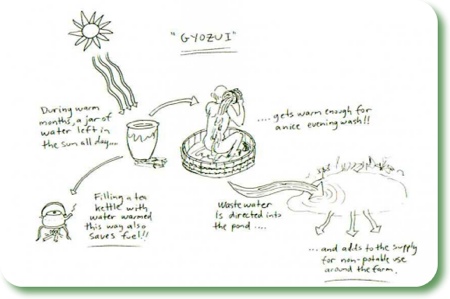Just Enough
I just read through a wonderful book. Wonderful refers to both its content as to the way it is made, designed, and illustrated. The book is called “Just Enough: Lessons in Living Green from Traditional Japan“
The book is about the Edo Period, which is a period in Japan’s history when ‘the mentality of the time found meaning and satisfaction in a life in which the individual took just enough from the world, and no more’. This is a fascinating approach, and as the author points out, difficult to judge for any of us who has never lived in a mostly self-sustaining society.
we will need to learn again what it means to use ‘just enough’, and to allow our choices to be guided by a deeper appreciation of the limits of the world we have been bequeathed as well as a determination to leave future generations with better possibilities than what we have given ourselves.
A central element necessary for this self-sustainability was the concept of re-use. The book is full of descriptions of how everything was used over and over again, and if something was not good for anything at all anymore, it was used to be burned for heat. The book illustrates clearly, how the concept of re-use propagated through design decisions for every little detail: the architecture of houses, the surroundings of houses, the planning of the city, how water is used, how food is used including how most people were vegetarians, or how manure was a precious resource and was collected in cities to be used as fertilizer on farm land. This went so far, that people with many children hat to pay less rent, because they provided so much fertilizer.
The movie “Plastic Planet”, about which I blogged, demonstrated clearly that our current society doesn’t re-use many things at all, and pointed out clearly that very soon we people on planet earth have to re-learn how to re-use things very quickly. From the view of “society”, there is also a relation to an article in the german paper TAZ, entitled “Ungleichheit zersetzt Gesellschaften“, which presents a study that showed that people live happier in countries with more equal opportunities, such as Japan (sic!)

Preserving water in traditional Japan
Here is the interesting part which is especially related to this blog: The people in Edo-Period Japan had realized that especially the resource clean water is very critical for their self-sustainability. Methods and designs for preserving water appeared in every facet of daily life:
- it was known that forests plays a critical role for storing water that is released over summer from glaciers at the high mountains. Hence forests determine the availability of water during the summer months. Hence they need to and were protected;
- for the cities, water sources such as rivers and ponds were protected for drinking water supply, and the people realized that people far away need to make sakrifices for source water protection in order to facilitate supply in cities via aqueducts;
- water in these aqueducts was mostly kept flowing by gravity, which required very sophisticated design — and allowed flowing water in all parts of the city 24/7, almost a luxury and unknown to european cities of the time.
Here is another review of “Just Enough”.